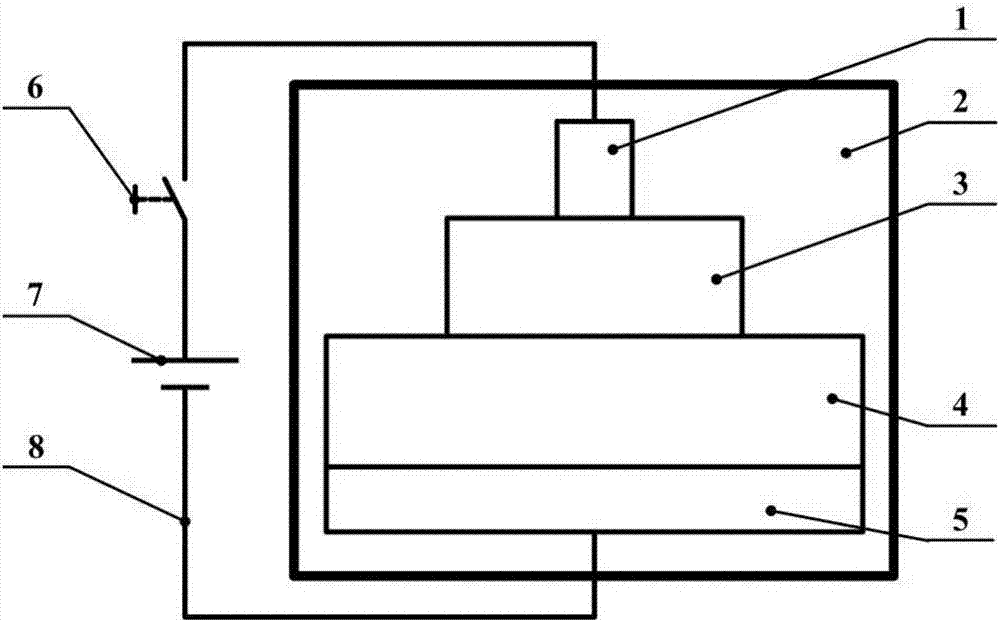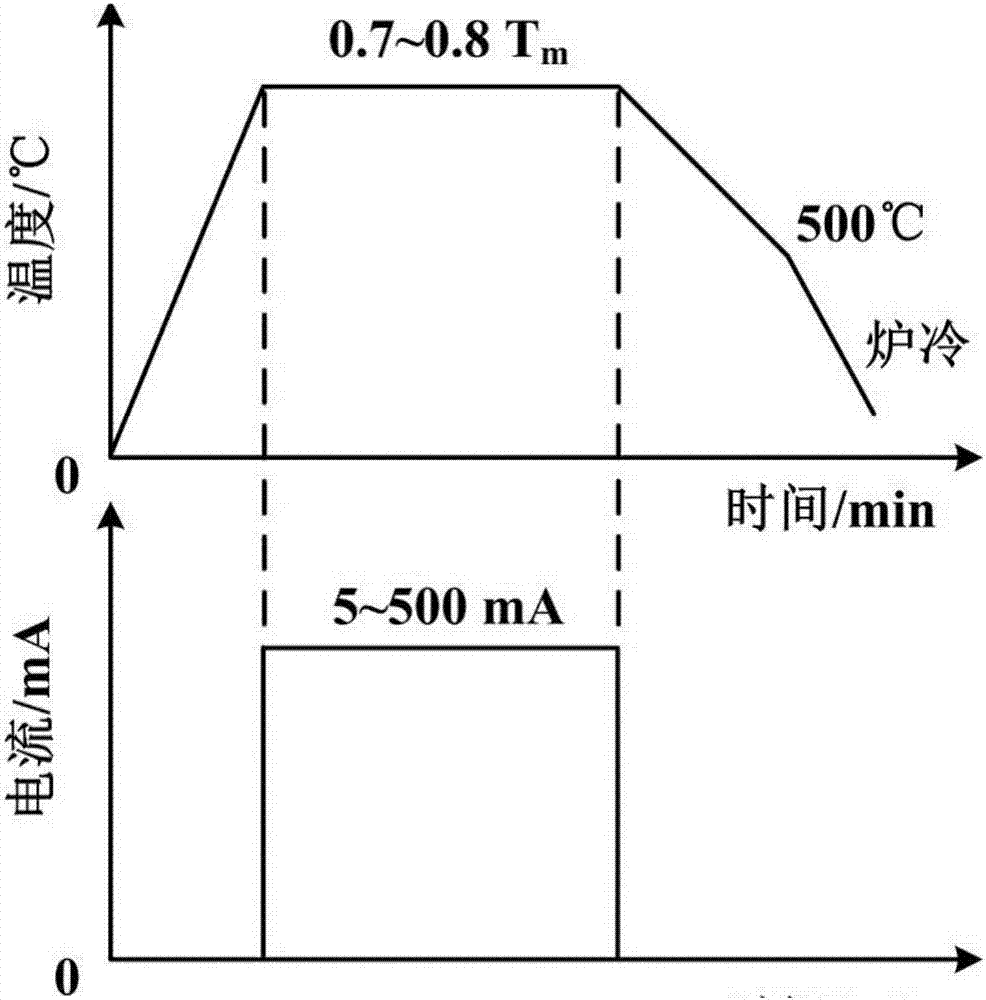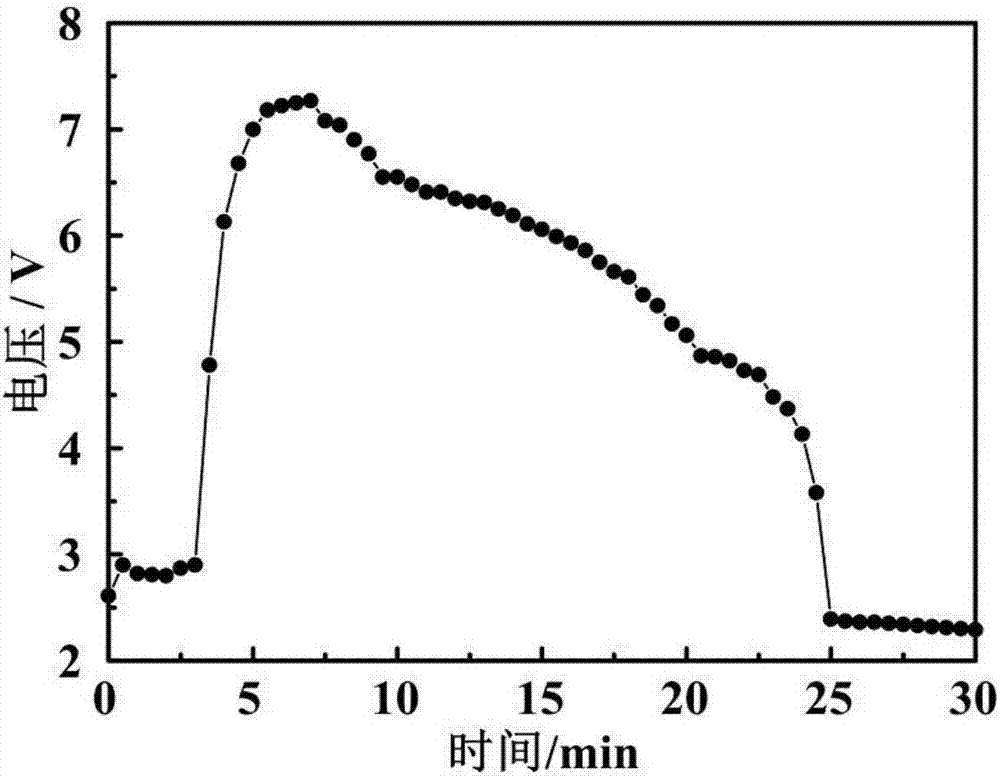Method for bonding ZrO2 ceramic and metal
A metal connection and ceramic technology, applied in the field of heterogeneous material connection, can solve the problems of joint service temperature control, uncontrollable interface reaction, and easy breakdown of materials, and achieve the effects of low cost, shortened cycle, and increased service temperature
- Summary
- Abstract
- Description
- Claims
- Application Information
AI Technical Summary
Problems solved by technology
Method used
Image
Examples
Embodiment 1
[0030] A kind of realization ZrO described in this embodiment 2 The new method of joining ceramics to metals proceeds as follows:
[0031] a. ZrO 2 The joint surface of ceramic and metal nickel was mechanically polished, then ultrasonically cleaned in acetone and dried, and then the ZrO 2 The ceramic 3 and the pure nickel 4 are stacked up and down, and placed on the graphite bottom electrode 5 in the high-temperature vacuum furnace;
[0032] The ZrO 2 Ceramics are doped with 3mol% Y 2 o 3 Stabilizer ZrO 2 For ceramics, the size is 8mm in diameter and 5mm in thickness, and the size of pure nickel is 20mm×20mm×5mm;
[0033] b. Vacuumize the vacuum furnace 2 until the vacuum enters 2×10 -3 After Pa, heat up to 1100°C at a rate of 20°C / min;
[0034] c. Unscrew the graphite upper electrode 1 to make it contact with ZrO 2 The upper surface contact of ceramic 3, the ZrO 2 The ceramic 3 is connected to the positive pole of the power supply 7, and the pure nickel 4 is connect...
Embodiment 2
[0039] The difference between this embodiment and Embodiment 1 is that the effective value of the constant current is 5mA, the power-on time is 60min, and other parameters and steps are the same as Embodiment 1. Measured Ni / ZrO 2 The shear strength of the joint is 124.8MPa, and the fracture of the joint is in Ni / ZrO 2 interface.
Embodiment 3
[0041] The difference between this embodiment and Embodiment 1 is that the effective value of the constant current is 500 mA, the power-on time is 5 minutes, and other parameters and steps are the same as those of Embodiment 1. Measured Ni / ZrO 2 The shear strength of the joint is 140.9MPa, and the fracture of the joint is in Ni / ZrO 2 interface.
PUM
| Property | Measurement | Unit |
|---|---|---|
| shear strength | aaaaa | aaaaa |
| shear strength | aaaaa | aaaaa |
| shear strength | aaaaa | aaaaa |
Abstract
Description
Claims
Application Information
 Login to View More
Login to View More - R&D
- Intellectual Property
- Life Sciences
- Materials
- Tech Scout
- Unparalleled Data Quality
- Higher Quality Content
- 60% Fewer Hallucinations
Browse by: Latest US Patents, China's latest patents, Technical Efficacy Thesaurus, Application Domain, Technology Topic, Popular Technical Reports.
© 2025 PatSnap. All rights reserved.Legal|Privacy policy|Modern Slavery Act Transparency Statement|Sitemap|About US| Contact US: help@patsnap.com



